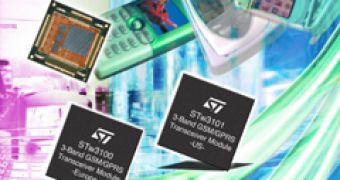Intel and STMicroelectronics decided sometime ago to enter a partnership with the stated intention of developing, manufacturing and selling flash memory chips. As Intel already faced monopoly charges in Europe, the two companies waited for the European Commission's approval before merging their flash memory units.
"The Commission found that strong competitors are present for each of these products and customers would be able to continue sourcing their needs from a sufficient number of alternative vendors," the European Union executive branch said in a statement and was cited by the news site News.zdnet. After the first negotiations that took place in May, the two companies, Intel and STMicroelectronics, decided that a merging with the declared purpose of addressing the competition on the flash memory market is a thing that will help increase revenues. As flash memory chips are now fitted in mobile phones, MP3 players, digital cameras and all other sorts of mobile devices, the market for them has the potential to drastically increase the revenues of a hardware manufacturing company.
The deal between the two companies states that Intel will turn over its NOR flash memory production lines and other related resources for a 45.1 percent share and a cash payment of $432 million, while STMicroelectronics will sell its NAND lines and assets to the newly formed company for a 48.6 percent of the share and an additional $468 million in cash. Another investor in the flash memory venture will be the privately held equity firm Francisco Partners that plans to trade 4150 million for convertible preferred stock in an amount of 6.3 percent of the new company.
This deal comes at a time when Intel already disposed of much of its flash memory assets, turning its NAND unit into a partnership with Micron Technology and according to most analysts it was only a matter of time until it would part with the NOR business. The Franco-Italian group STMicroelectronics on the other hand decided to move most of its production facilities in Asia in order to cut production costs.

 14 DAY TRIAL //
14 DAY TRIAL //